
The Roman Empire is widely regarded as one of the most significant and influential civilizations in human history. Its vast territory, sophisticated institutions, and cultural achievements continue to fascinate people to this day. However, what is often overlooked is the impressive legacy of technological innovation that the Roman Empire left behind. From military inventions to engineering marvels, the Romans were responsible for many groundbreaking discoveries and creations that still have an impact on our lives today.
In this 10-chapter short book, I will take a deep dive into some of the most remarkable inventions of the Roman Empire. Each chapter will explore a different aspect of Roman innovation, highlighting the brilliance and ingenuity of this ancient civilization.
Over the next 10 weeks, we will examine the fascinating world of Roman inventions. From the practical to the revolutionary, we will showcase the remarkable contributions of the Romans in areas such as transportation, construction, medicine, and more. These inventions have shaped the course of history and continue to influence the world in which we live.
So, join me on this exciting journey through the world of Roman innovation. I promise to provide you with a unique perspective on the extraordinary technological achievements of one of the greatest civilizations the world has ever known.
C-1 The Aqueduct:
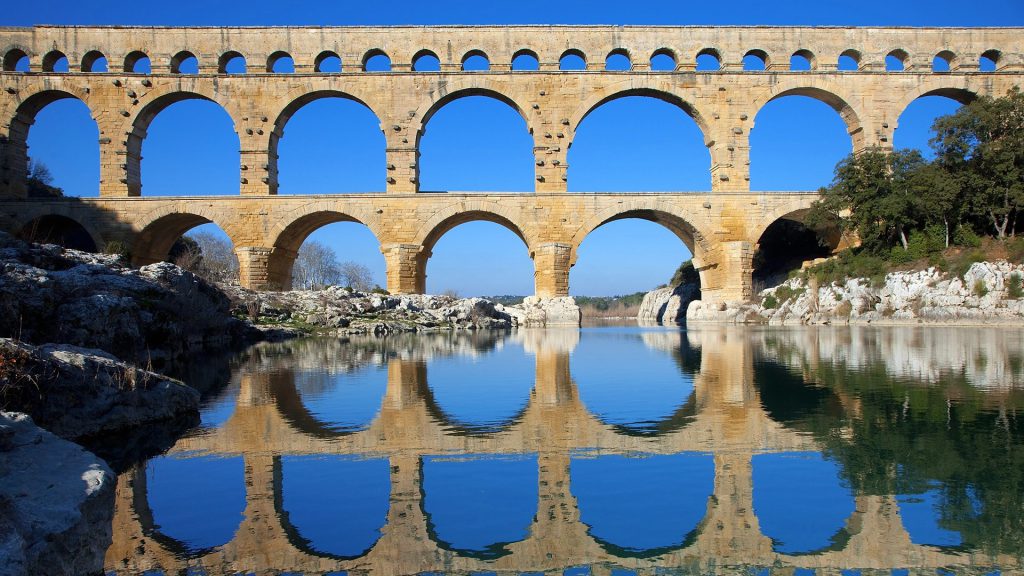
The Roman aqueducts are one of the most impressive feats of engineering from the ancient world. These structures were designed to bring water from distant sources to cities, towns, and villages across the Roman Empire. The aqueducts were essential to the survival and growth of the Roman Empire, providing clean water for drinking, bathing, and irrigation. This essay will explore the history of the Roman aqueducts, their design, construction, and significance.
The Roman aqueducts were not the first in the world, as other civilizations had built water systems. However, the Romans took the idea of aqueducts to a new level of sophistication, building structures that spanned hundreds of kilometers and transported millions of liters of water each day.
The origins of the Roman aqueducts can be traced back to the Etruscans, who lived in central Italy before the rise of Rome. The Etruscans built underground channels to bring water to their cities, and the Romans later adopted this technology. The Romans also borrowed from the Greeks, who had built aqueducts in ancient Greece.
The design of the Roman aqueducts was a complex process that involved careful planning, surveying, and construction. The engineers who designed the aqueducts had to take into account the natural terrain, the distance between the water source and the city, and the volume of water needed.
The aqueducts were typically made of stone, brick, or concrete. The water flowed through channels, which were lined with waterproof materials such as lead, concrete, or terracotta tiles. The channels were supported by arches, which distributed the weight of the structure and allowed it to span valleys and other obstacles.
One of the most impressive aspects of the Roman aqueducts was their ability to transport water over long distances. The longest aqueduct, the Aqua Claudia, stretched for over 69 kilometers and had a gradient of just 0.3%. This meant that the water flowed at a steady pace, without the need for pumps or other mechanical devices.
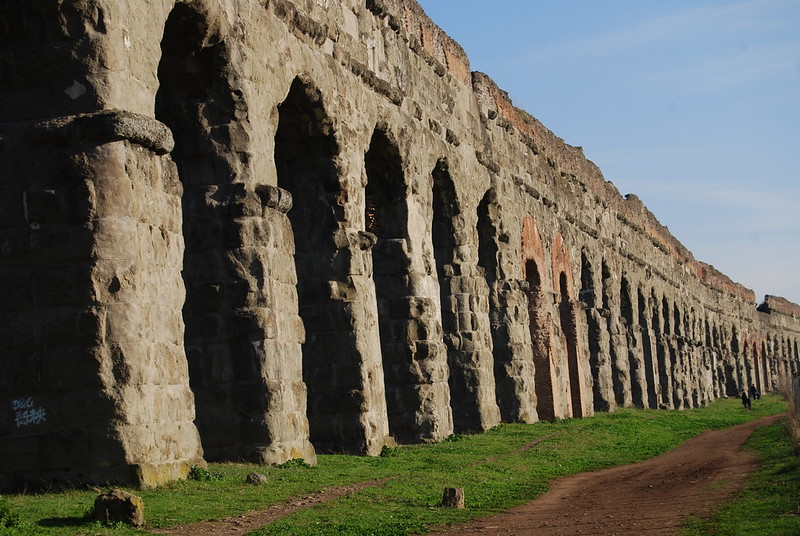
The construction of the Roman aqueducts was a massive undertaking that required skilled labor, extensive resources, and significant investment. The construction process typically involves four stages: surveying, designing, building, and maintaining.
The first stage was surveying, which involved mapping the terrain, locating the water source, and determining the best route for the aqueduct. This required skilled engineers who could use tools such as the groma, a surveying instrument used to create a grid pattern.
The second stage was designed, which involved creating the plans for the aqueduct. This required a deep understanding of engineering principles, including hydraulics, mechanics, and materials science.
The third stage was building, which involved quarrying stone, mixing concrete, and laying bricks. The construction process was typically carried out by skilled laborers, who worked under the supervision of engineers and architects.
The final stage was maintenance, which involved regular inspections, repairs, and improvements. The aqueducts were maintained by workers responsible for keeping the channels clean, repairing any damage, and ensuring that the water flowed smoothly.
Aqueducts were of immense significance to the Roman Empire, providing clean water to millions of people across the empire. The aqueducts allowed the Romans to expand their cities and towns, as they no longer had to rely on local water sources that were often contaminated.
The aqueducts also played a vital role in Roman agriculture, as they provided water for irrigation. This allowed the Romans to grow crops in areas that were previously arid or desert-like, increasing the empire’s food supply.
The aqueducts also had social significance, as they allowed the Romans to develop a more sophisticated and advanced culture. The availability of clean water meant that people could bathe more regularly, which improved hygiene and reduced the spread of disease. Public fountains and baths became an important part of Roman life, providing a space for people to socialize and relax.
The construction of the aqueducts also had an impact on Roman society. The building of these massive structures required significant investment and labor, which created employment opportunities and stimulated the economy. The construction of the aqueducts also helped to foster a sense of pride and unity among the Roman people, as they could see the tangible benefits of this impressive engineering feat.
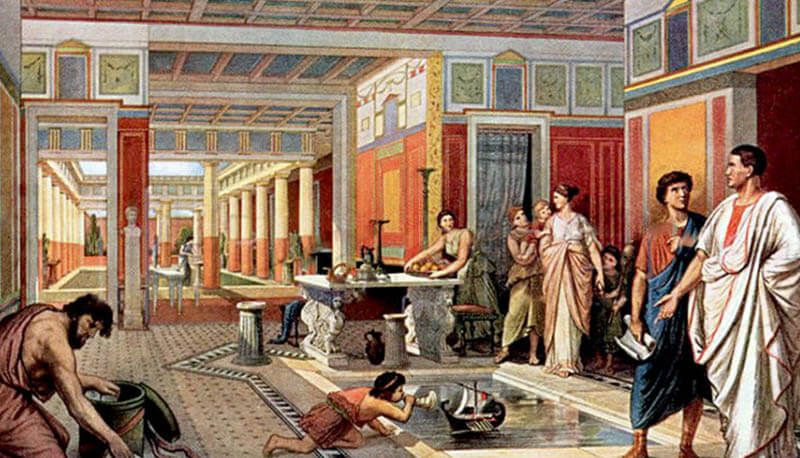
Roman aqueducts were one of the most remarkable achievements of the ancient world, demonstrating the ingenuity and skill of Roman engineers and builders. These structures played a critical role in the development of the Roman Empire, providing clean water for drinking, bathing, and irrigation. The aqueducts also had significant social and cultural significance, improving hygiene, stimulating the economy, and fostering a sense of pride and unity among the Roman people. Today, the ruins of the Roman aqueducts serve as a testament to the remarkable achievements of this great civilization.

C-2 Sanitation :
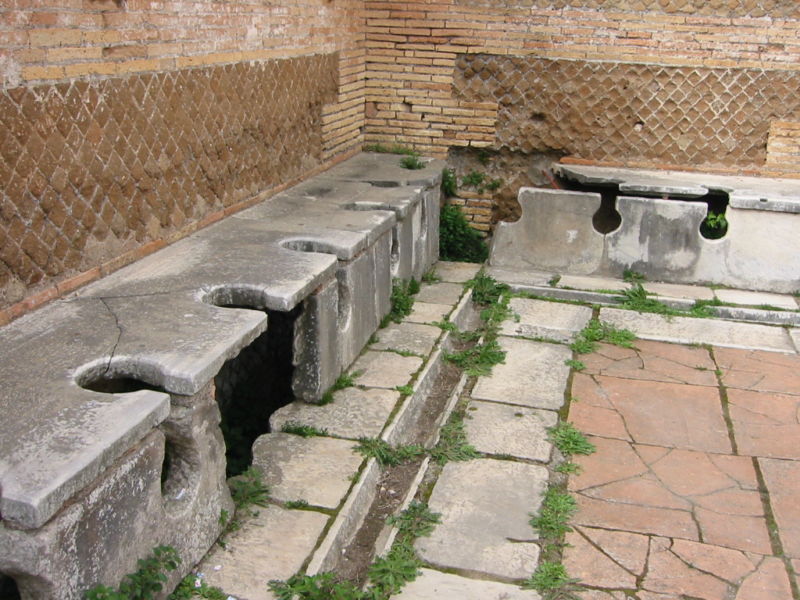
introduction
Sanitation has been an essential aspect of human life throughout history. The Romans were no exception, and their sanitary practices played a critical role in the health and well-being of the population. This chapter will explore the history of Roman sanitation, including the development of public toilets, sewer systems, and other hygiene practices.

Origins of Roman Sanitation
The Romans inherited their sanitation practices from the Greeks, who sophisticatedly understood hygiene and public health. The Greeks believed in hygiene, which meant “the science of health.” This concept emphasized the importance of cleanliness and personal hygiene in maintaining good health.
The Romans also inherited their sanitation practices from the Etruscans, who lived in central Italy before the rise of Rome. The Etruscans developed an advanced system of drainage and sewerage, which the Romans later adopted.
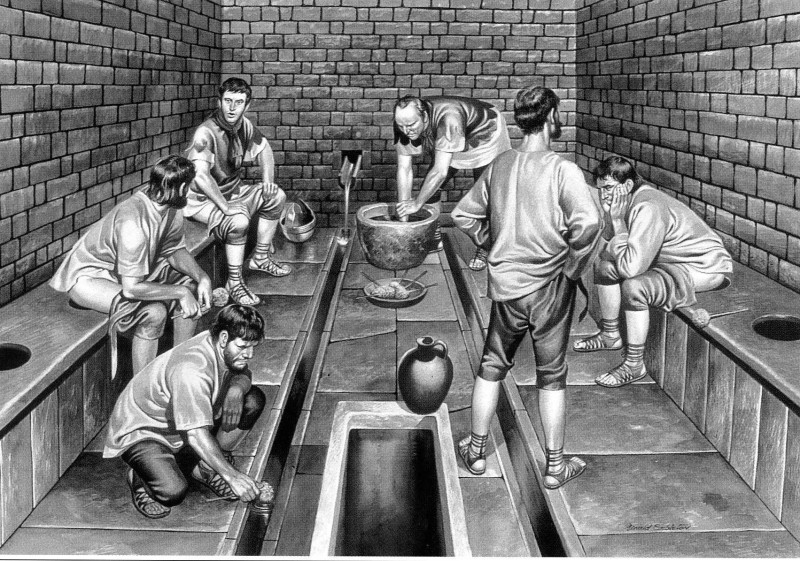
Public Toilets
One of the most significant contributions of the Romans to sanitation was the development of public toilets. These toilets were known as latrines and were typically built alongside public baths or other public buildings.
The latrines were designed with a series of stone or marble seats, with holes cut into them. The seats were arranged in a row, with a channel running beneath them. This channel was connected to a sewer system, which carried the waste away from the latrine.
The latrines were a significant improvement over previous sanitation practices, which involved defecating in public or makeshift latrines. The public toilets allowed for more hygienic and discreet sanitation practices, improving public health and reducing the spread of disease.
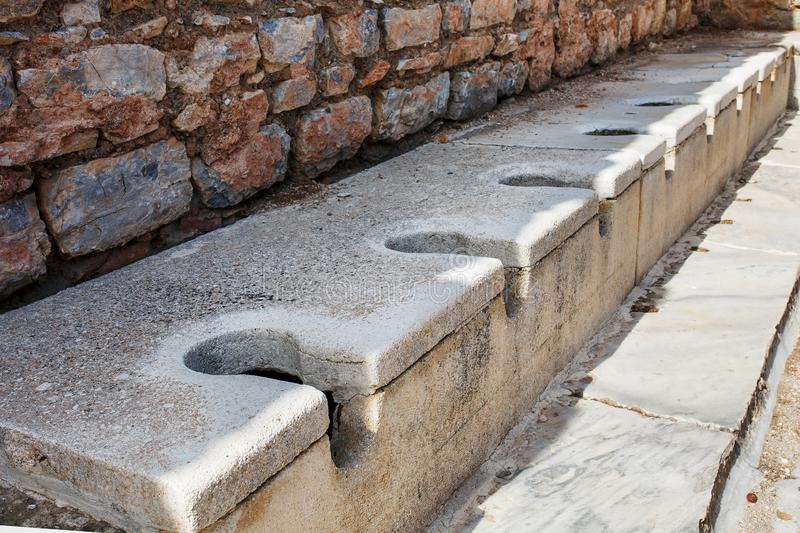
Sewer Systems
Another critical aspect of Roman sanitation was the development of sewer systems. The Romans recognized the importance of removing waste and wastewater from the city to prevent the spread of disease.
The sewer systems were typically built using a combination of stone and brick. The channels were lined with waterproof materials, such as concrete or terracotta tiles. The channels were then connected to large underground tunnels, which carried the wastewater away from the city.
The development of sewer systems was a significant engineering feat, requiring extensive planning and construction. The sewers had to be carefully designed to ensure that they could handle the volume of waste and wastewater generated by the city.
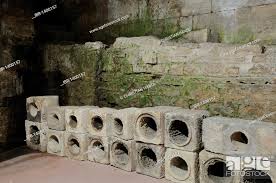
Significance of Roman Sanitation
The sanitation practices developed by the Romans played a critical role in the health and well-being of the population. The public toilets, sewer systems, and other hygiene practices reduced disease spread and improved public health.
The development of public toilets was particularly significant, as it allowed for more hygienic and discreet sanitation practices. The public toilets also helped to reduce the spread of disease, which was a significant problem in ancient cities.
Developing sewer systems was also critical, as it allowed for the safe and efficient removal of waste and wastewater from the city. The sewer systems helped to reduce the risk of waterborne diseases, which were a significant problem in ancient cities.

Roman sanitation practices have had a lasting impact on modern society. The development of public toilets, sewer systems, and other hygiene practices has contributed to the development of modern sanitation practices, which have improved public health and reduced the spread of disease. Today, many cities around the world have adopted similar sanitation practices, including public toilets, wastewater treatment plants, and public health regulations. The Roman legacy of sanitation continues to be a reminder of the importance of hygiene and public health in maintaining a healthy and prosperous society.
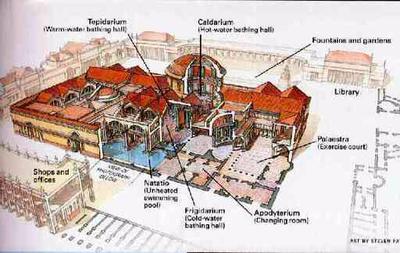
C-3 Time Keeping:
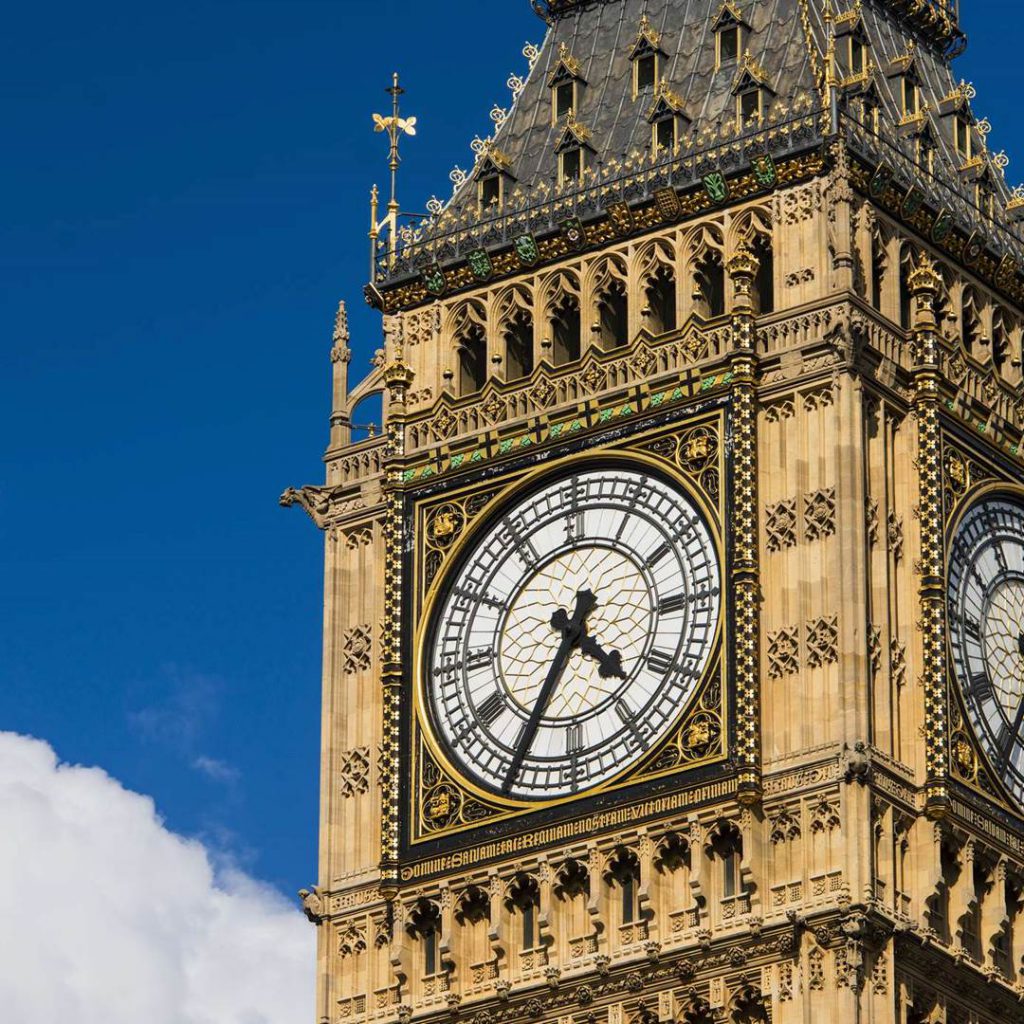
Timekeeping is an essential part of human life, and it has been so for thousands of years. From the earliest sundials to the most sophisticated atomic clocks, people have always sought to measure time accurately and consistently. The Romans were no exception, and they developed several innovative methods of timekeeping that allowed them to organize their daily lives and coordinate their vast empire.
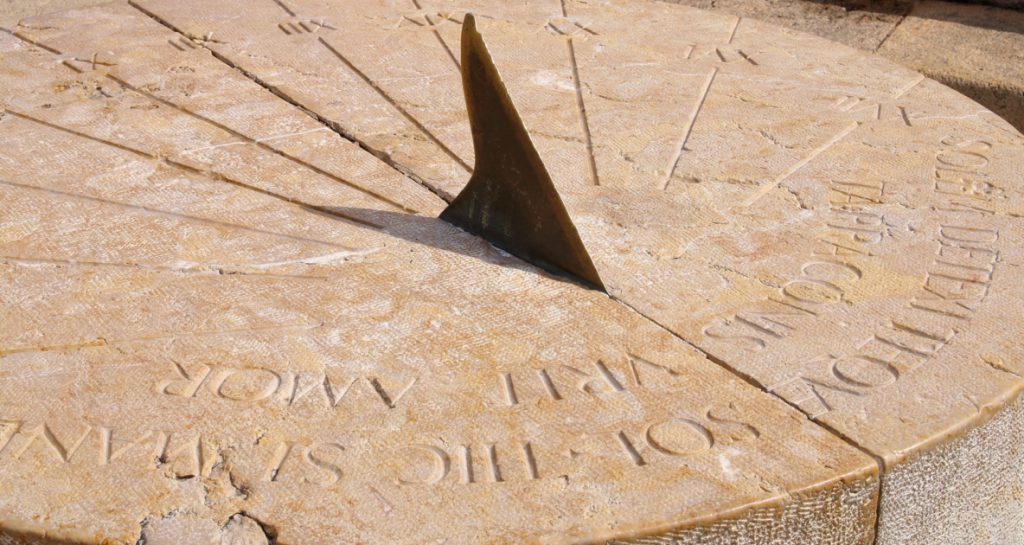
The Roman Calendar
The Roman calendar was the basis of the Roman system of timekeeping, and it was a lunar calendar that consisted of 12 months. Each month had either 29 or 31 days, and the total number of days in a year was 355. The Roman calendar had several problems, including the fact that it did not align with the solar year, and it gradually fell out of sync with the seasons. To address these issues, the Romans periodically added extra days to the calendar, which became known as intercalary days.
The most famous reform of the Roman calendar was the Julian calendar, which was introduced by Julius Caesar in 45 BCE. The Julian calendar was a solar calendar that had 365 days, with an extra day added every four years to account for leap years. The Julian calendar was a significant improvement over the earlier Roman calendar, and it remained in use in most of Europe until the adoption of the Gregorian calendar in the 16th century.

Sundials and Water Clocks
Sundials were one of the earliest methods of timekeeping, and they were widely used in the Roman Empire. Sundials work by using the position of the sun to indicate the time of day, and they were simple and effective devices. The Romans built sundials in many public places, including temples, forums, and public squares. The most famous sundial in the Roman Empire was the solarium Augusti, which was built by Emperor Augustus in 10 BCE. The solarium Augusti was a massive sundial that was more than 30 meters tall, and it was used to mark the time of day and the changing of the seasons.
Water clocks were another method of timekeeping used in the Roman Empire. Water clocks worked by using the flow of water to measure time, and they were more accurate than sundials. Water clocks were used in many public places, including theaters, courts, and marketplaces. The most famous water clock in the Roman Empire was the horologium Augusti, which was built by Emperor Augustus in 9 BCE. The horologium Augusti was a massive public clock that used water to measure time and displayed the time of day, the phases of the moon, and the positions of the stars.
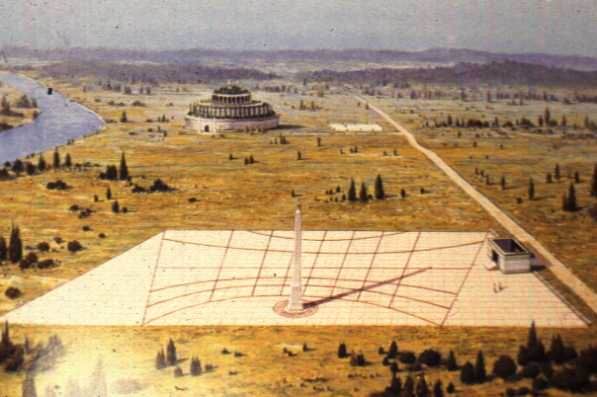
Impact on Roman Society and Culture
Timekeeping had a significant impact on Roman society and culture. It allowed the Romans to coordinate their vast empire more efficiently and organize their daily lives. Timekeeping was essential for various activities, including agriculture, transportation, trade, and administration. It also played a significant role in religion, as the Romans used time to mark the changing of the seasons and the cycles of the moon.
Timekeeping also had an impact on the arts and literature of the Roman Empire. Roman poetry and literature used complex meters and rhythms based on the measurement of time. The rhythms of Roman poetry were designed to mimic the patterns of speech and reflected the rhythms of daily life. Timekeeping also had an impact on the visual arts, as Roman artists used time to create dynamic and lifelike representations.
The Roman timekeeping system has left a lasting impact on modern society, influencing the way we measure and organize time. The Julian calendar, introduced by Julius Caesar, is the basis of the modern Gregorian calendar used today. The concept of dividing the day into 24 hours, each hour into 60 minutes, and each minute into 60 seconds, is also derived from the Roman system. The use of sundials and water clocks to measure time also paved the way for the development of modern timekeeping devices such as clocks and watches. Overall, the Roman timekeeping system has played a significant role in shaping our current understanding and measurement of time.
C-4 Military Technology
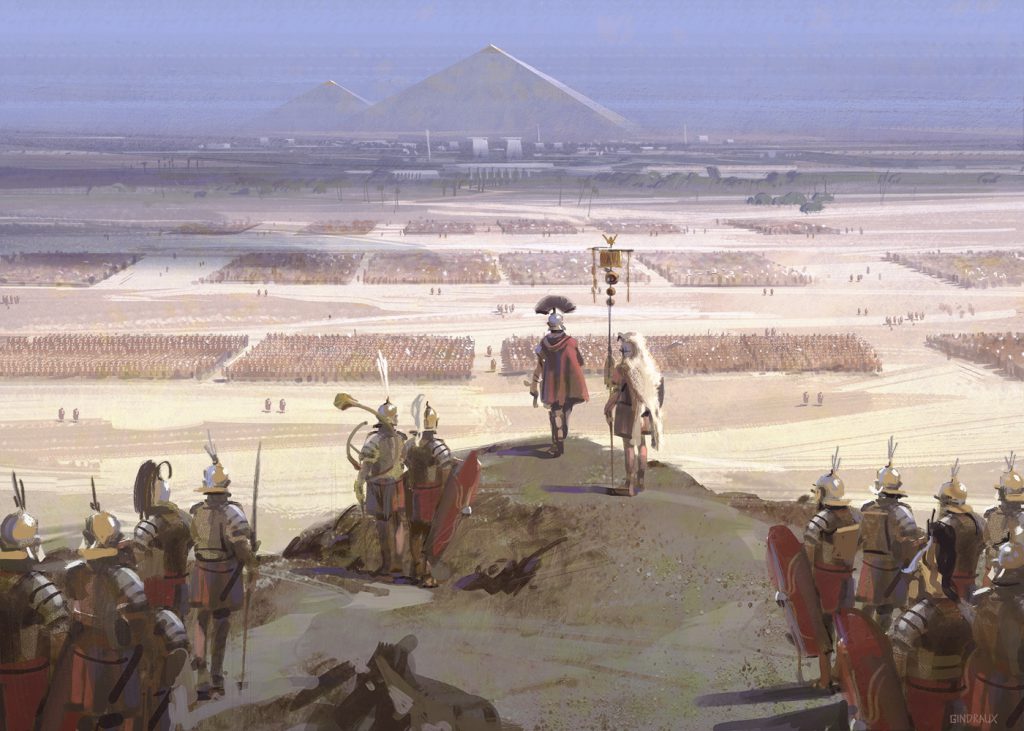
Military Technology in the Roman Empire
The Roman Empire was known for its military prowess, which was fueled by advancements in military technology. The Romans developed innovative military technologies that allowed them to conquer vast territories and establish one of the most formidable empires in history. In this chapter, we will explore the military technologies used by the Romans, including weapons, fortifications, transportation, and communication, and the impact they had on Roman warfare and conquest.
Weapons
The Romans were renowned for their advanced weapons, which gave them a significant advantage in battle. The Roman soldiers, known as legionaries, were equipped with a variety of weapons that were effective in different combat situations. One of the most iconic Roman weapons was the gladius, a short sword used for close combat. The gladius was highly effective in the tight formations and disciplined fighting style of the Roman legions.
In addition to the gladius, the Romans used other weapons such as the pilum, a throwing spear, and the javelin, a long-range weapon used for skirmishing. The Roman legions also used siege weapons such as catapults, ballistae, and battering rams to breach enemy fortifications. These weapons allowed the Romans to besiege and conquer heavily fortified cities.

Fortifications
Fortifications played a crucial role in Roman military strategy, and the Romans developed sophisticated defensive structures to protect their territories. One of the most famous Roman fortifications was Hadrian’s Wall, a 73-mile long defensive barrier built in northern Britain during the reign of Emperor Hadrian. The wall consisted of multiple forts, towers, and defensive ditches, and served as a physical and psychological deterrent against invading forces.
The Romans also developed other types of fortifications, such as castra, which were temporary military camps used during campaigns, and castella, which were small fortresses used for local defense. These fortifications were strategically positioned along key trade routes, rivers, and borders, and provided the Romans with a strong defensive advantage.

Transportation
Transportation was crucial for the Roman military to move troops, supplies, and equipment efficiently. The Romans developed an extensive network of roads, bridges, and aqueducts that facilitated the movement of their armies. The most famous of these roads was the Via Appia, also known as the Appian Way, which connected Rome to the southern regions of Italy. The Roman road system allowed the legions to move quickly and effectively across the empire, enabling them to respond rapidly to threats and maintain control over their territories.
The Romans also developed an impressive navy that controlled the Mediterranean Sea, known as the Mare Nostrum. The Roman navy utilized advanced shipbuilding techniques and navigation skills to project Roman power across the Mediterranean and protect their trade routes. The Roman navy played a crucial role in maintaining control over the vast territories of the Roman Empire, as well as in conducting naval battles and amphibious assaults.
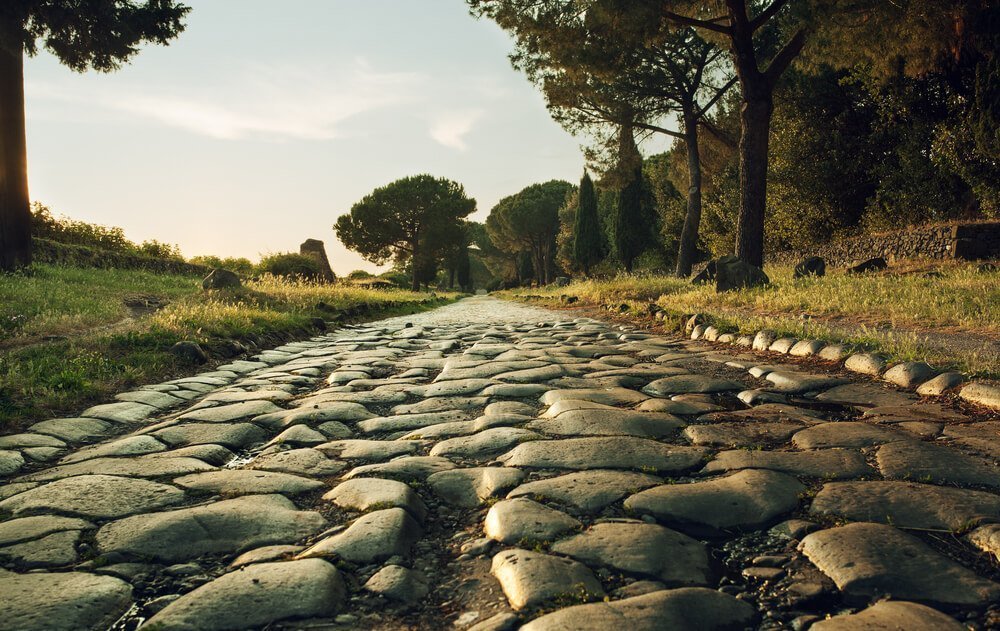
Communication
Effective communication was essential for the Romans to coordinate their military operations and maintain control over their vast empire. The Romans developed various means of communication, including messengers, signal flags, and trumpet calls, to relay orders and information across their armies. They also used military standards, or vexilla, to identify and locate different units on the battlefield.
During military campaigns, the Roman military also made significant advancements in field engineering to build temporary fortifications, bridges, and roads. The construction of such fieldwork required skilled engineers who could adapt to different terrains and conditions and played a critical role in the success of Roman military campaigns.
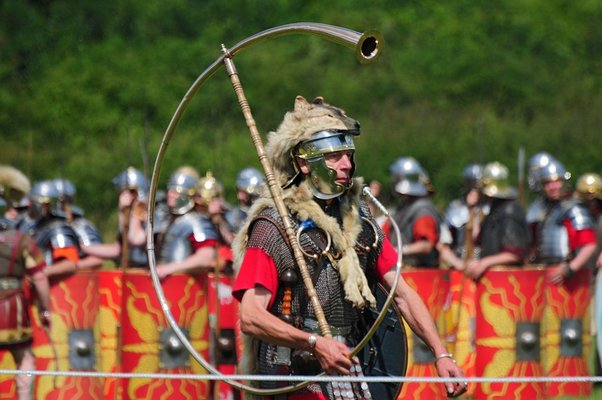
The Roman military has had a lasting impact on modern society in several ways. The Roman military’s innovative technologies and strategies have influenced modern military tactics and warfare. Many of the principles of military organization, discipline, and logistics used by the Romans are still applied in modern military operations. Additionally, the Roman emphasis on engineering and infrastructure has influenced modern approaches to building fortifications, roads, and bridges for military purposes. The Roman military’s legacy in terms of organizational structure, strategies, and engineering has helped shape modern military practices and continues to be studied and applied by military professionals today.
C-5 Concrete:

The Roman Empire is renowned for its achievements in architecture and engineering, which have influenced building practices and technologies for centuries. One of the most significant contributions of the Romans to the field of construction was the development of concrete, which allowed for the construction of massive structures that still stand today. In this chapter, we will explore the history of concrete in the Roman Empire, its properties and applications, and its impact on the architecture and engineering of the time.

History of Roman Concrete
The use of concrete in the Roman Empire dates back to the third century BCE, with the construction of the Via Appia, the first Roman road made of concrete. The Romans used a revolutionary form of concrete known as opus caementicium, which was made from a mixture of lime, volcanic ash, and aggregate.
The addition of volcanic ash, called pozzolana, was a key innovation that made Roman concrete much stronger and more durable than other forms of concrete at the time. The use of this material allowed the Romans to construct massive structures, including aqueducts, bridges, and monumental buildings, such as the Pantheon.
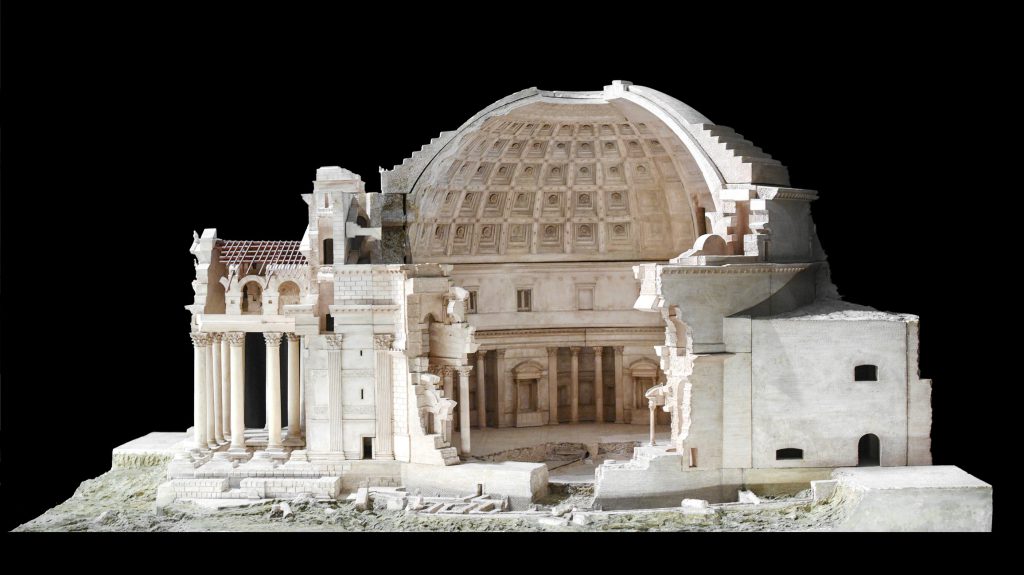
Properties of Roman Concrete
Roman concrete was a versatile and durable material that could be molded into any shape and size. It had excellent compressive strength and was resistant to environmental damage, including fire and water. Roman concrete was also lightweight and could be easily transported, making it an ideal material for construction projects.
The strength of Roman concrete was due to the chemical reaction that occurred when the pozzolana and lime were mixed with water and allowed to dry. This reaction produced a dense, crystalline structure that was resistant to cracks and other forms of damage.

Applications of Roman Concrete
The use of Roman concrete was widespread in the Roman Empire, and it was used to construct a wide range of structures. One of the most significant applications of Roman concrete was in the construction of aqueducts, which were essential for providing water to the growing Roman cities. The aqueducts used a series of arches made of Roman concrete, which provided the support necessary to transport water over long distances.
The Romans also used concrete to construct bridges, such as the Pont du Gard in France, which is one of the best-preserved examples of Roman engineering. The bridge used a series of arches made of Roman concrete, which provided the strength and stability necessary to support the weight of the bridge.
Another significant application of Roman concrete was in the construction of monumental buildings, such as the Pantheon. The Pantheon is a massive structure that has stood for over 2,000 years, and its dome is one of the most impressive architectural feats of the Roman Empire. The dome was made of Roman concrete, which allowed for its massive size and weight.
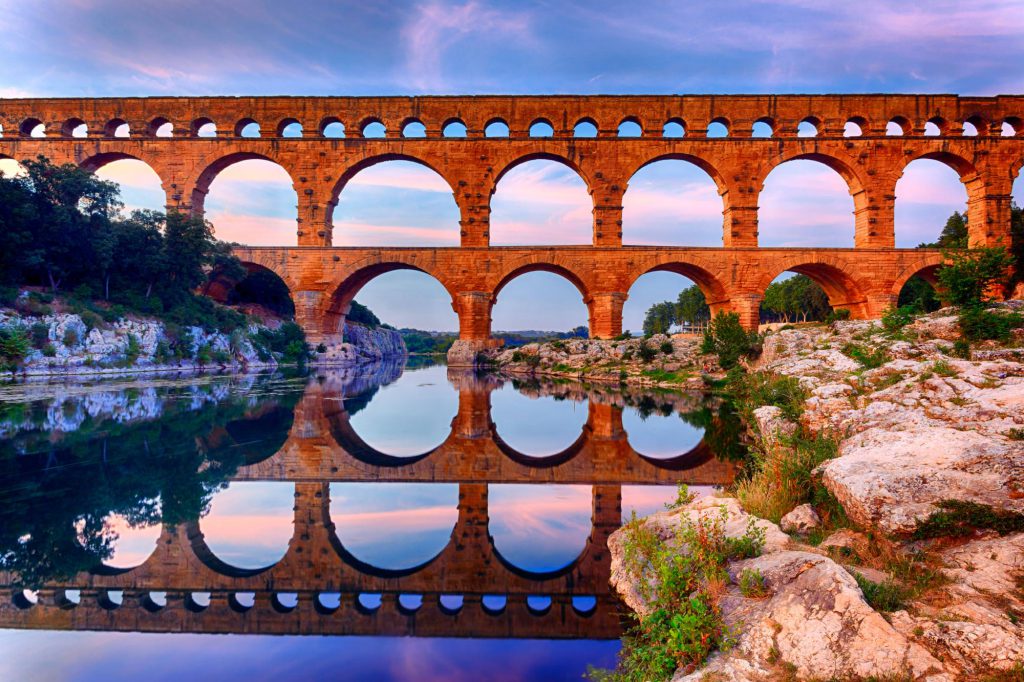
Impact of Roman Concrete on Architecture and Engineering
The development of Roman concrete significantly impacted the architecture and engineering of the Roman Empire and beyond. The use of Roman concrete allowed for the construction of massive structures that were previously impossible to build, and it influenced the design and construction of buildings and infrastructure for centuries.
The Romans’ use of concrete and arches in construction influenced the design of bridges and aqueducts throughout history. The use of Roman concrete also influenced the development of reinforced concrete, a material that is still widely used in construction today.
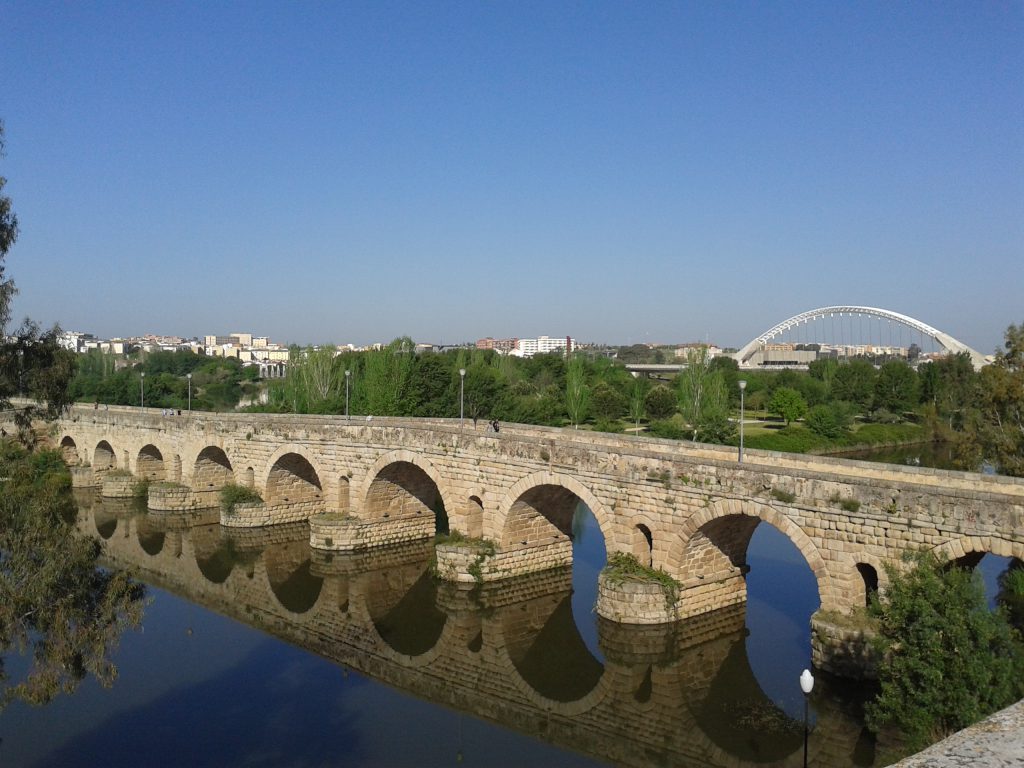
The development of Roman concrete was a significant achievement in the history of architecture and engineering, and its impact can still be seen today. The use of Roman concrete allowed for the construction of massive structures, including aqueducts, bridges, and monumental buildings, which still stand today as a testament to the ingenuity of Roman engineering.
The properties and applications of Roman concrete were remarkable, and its use influenced the development of building practices and technologies for centuries. The legacy of Roman concrete continues

Published: Mar 25, 2023
Latest Revision: Mar 25, 2023
Ourboox Unique Identifier: OB-1433790
Copyright © 2023








